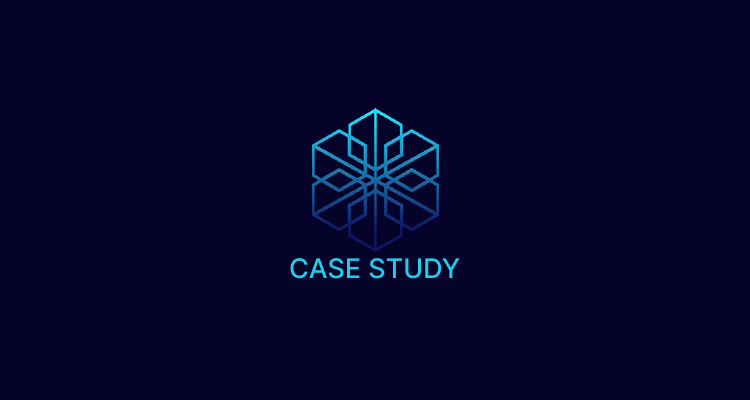Overview: In 2025, Saudi Aramco, the world’s largest integrated energy and chemicals company, faced significant supply chain disruptions amidst escalating geopolitical tensions, new U.S. sanctions on Russian oil producers, and the increasing complexity of global energy logistics. However, an anticipated decrease in attacks from Houthi rebels in the region signaled potential stabilization in supply chains. This shift, coupled with Sinansys’ advanced AI and blockchain-powered platform, allowed Aramco to maximize profitability by optimizing operations and capitalizing on improved market conditions.
The Challenge: Saudi Aramco’s supply chain challenges in 2025 were characterized by:
- Geopolitical Risks: Escalating tensions in the Middle East and sanctions on Russian oil disrupted key shipping routes, particularly the Strait of Hormuz and the Red Sea, leading to delays and increased insurance premiums.
- Weather-Related Disruptions: Aramco’s operations in regions prone to extreme heat, dust storms, and occasional severe rain required proactive logistics management to avoid weather-induced delays.
- Complex Logistics Network: Managing Aramco’s extensive global supply chain, including upstream operations, downstream refineries, and export hubs, required enhanced visibility and coordination.
- Sustainability Goals: Saudi Arabia’s Vision 2030 initiative emphasized reducing carbon footprints and aligning operations with global sustainability standards.
- Market Shifts: With the anticipated decrease in Houthi rebel attacks, supply chain stability improved, influencing global energy markets and creating opportunities for Aramco to optimize pricing strategies.
The Sinansys Solution: By integrating Sinansys, Aramco leveraged cutting-edge AI and blockchain technologies to address its supply chain challenges and seize new opportunities:
- Predictive Risk Management: Sinansys provided real-time risk assessments, helping Aramco navigate shifting geopolitical risks and anticipate the effects of decreased Houthi rebel attacks. This allowed Aramco to adjust operations proactively, reducing risks and costs.
- Weather Predictive Models for Logistics Optimization: Advanced weather analytics helped Aramco anticipate extreme weather events, such as dust storms and heatwaves, optimizing logistics schedules and reducing delays by 35%.
- End-to-End Supply Chain Visibility: Blockchain-enabled transparency offered Aramco real-time visibility into its global supply chain, ensuring seamless coordination across suppliers, refineries, and shipping partners.
- Dynamic Market Pricing: Sinansys monitored global market trends, allowing Aramco to adjust pricing dynamically as supply chain disruptions decreased. This enabled Aramco to capture higher margins while maintaining competitiveness.
- Cost and Sustainability Optimization: AI-driven insights identified cost-saving opportunities in freight management and bulk shipping contracts, saving an estimated $120 million annually. Sustainability features optimized shipping routes, reducing emissions by 18% and aligning with Vision 2030 goals.
The Benefits:
- Enhanced Operational Resilience: Sinansys’ predictive capabilities minimized disruptions, ensuring uninterrupted operations and securing Aramco’s reputation as a reliable energy supplier.
- Increased Revenue and Profitability: Improved market conditions, coupled with dynamic pricing strategies, generated an additional $600 million in annual revenue. Margins improved due to reduced costs and optimized logistics.
- Cost Savings: Logistics optimization and cost management strategies saved $120 million annually, offsetting increased shipping and insurance expenses.
- Improved Global Market Stability: Aramco’s ability to deliver reliably amidst reduced Houthi rebel disruptions contributed to global market stability, moderating oil price volatility and strengthening long-term client relationships.
- Strengthened Client Relationships: Timely deliveries and proactive communication bolstered client confidence, securing contracts worth an estimated $500 million.
- Enhanced Sustainability Metrics: Reduced emissions and streamlined operations supported Aramco’s sustainability goals, enhancing its brand image and securing long-term partnerships.
Total Financial Benefits: The combined financial benefits of increased revenue, cost savings, and secured contracts amounted to $1.22 billion annually.
Conclusion: Saudi Aramco’s implementation of Sinansys demonstrates the critical role of advanced supply chain management technologies in navigating modern energy logistics and market dynamics. By leveraging real-time analytics, blockchain transparency, AI-driven insights, and weather predictive models, Aramco optimized its operations, enhanced profitability, and contributed to global market stability. This case study underscores Sinansys’ capability to drive resilience, efficiency, and innovation for industry giants like Aramco.
*Disclaimer - This case study is for informational and illustrative purposes only. It is based on publicly available data, industry trends, and hypothetical scenarios rather than direct experience or engagement with the business described. Any insights, strategies, or recommendations provided do not reflect confidential or proprietary knowledge of the company and should not be interpreted as an endorsement or formal association. Readers should conduct their own research and due diligence before making any business decisions based on the content of this case study.
